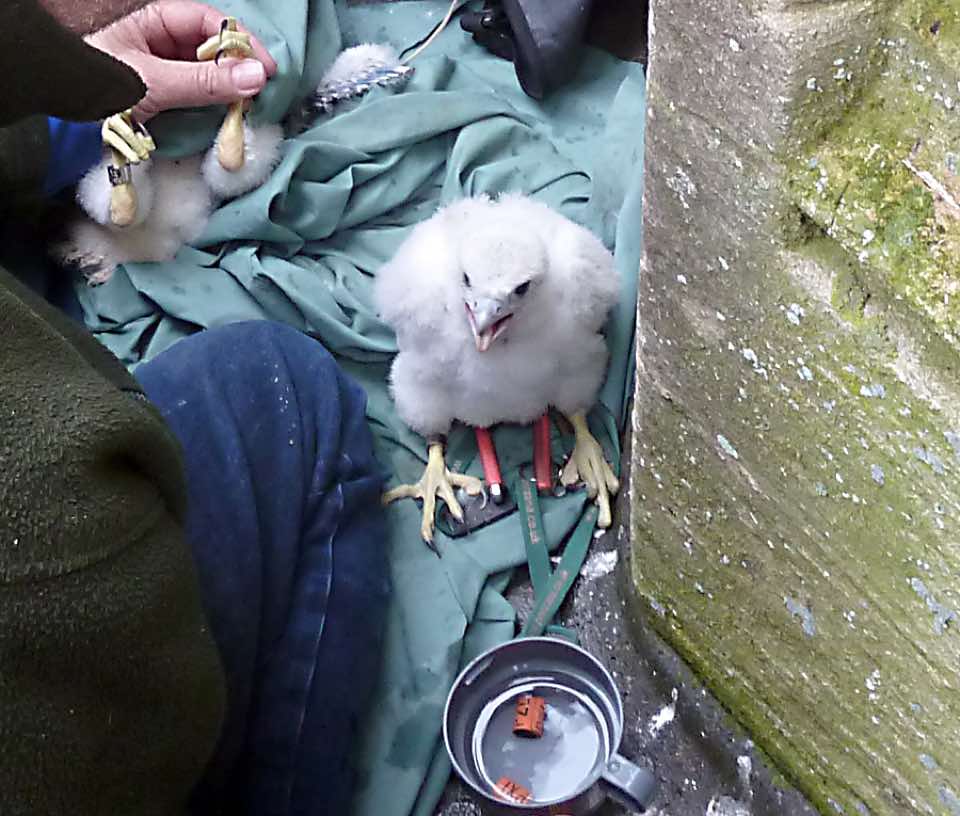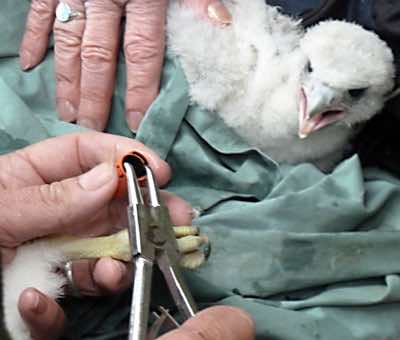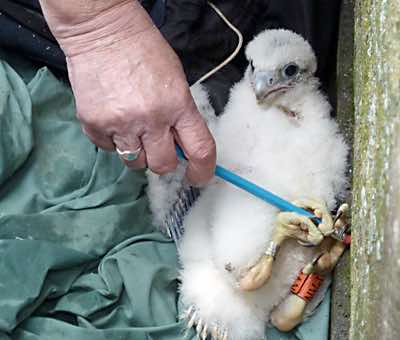2021
Download an illustrated PDF report of the 2021 season
Exciting news! The Lincolnshire Bird Club have kindly agreed to sponsor a webcam to monitor the nest tray in 2021. The infra-red camera will be running for the 3 months of the breeding season and should capture all the nest acivity day and night.
17 January 2021
Our peregrines were seen flying together, calling to each other and performing tumbling displays, all part of pair-bonding and courtship.
21 January
A busy (and breezy) morning on the church tower walkway. Chris Marshall and I installed the nest tray and camera for the TV screen in the coffee shop.
30 January
A long 10-hour slog by the Wildlife Windows lads has given us our first webcam! This will supplement the video to the TV in the coffee shop. We have two cameras, a fixed focus one pointing along the east walkway (useful when the juveniles leave the nest) and a zoom camera aimed at the nest tray. There is also the ability to have a split screen, where both cameras are viewable.
We are still waiting to get the streaming up and running – there is a cost involved, but there is plenty of time, the birds didn't visit the nest tray until March last year.
Images below are photos of the two cameras, plus the split screen – all infra-red night views.



11 February
First visit to the nest by our birds. They spent 13 minutes there, creating a depression in the gravel. Watch the full video HERE
21 February
Another visit at 08.00 by the female, following visits on the 17th & 20th. Each time, the female enlarges the scrape.
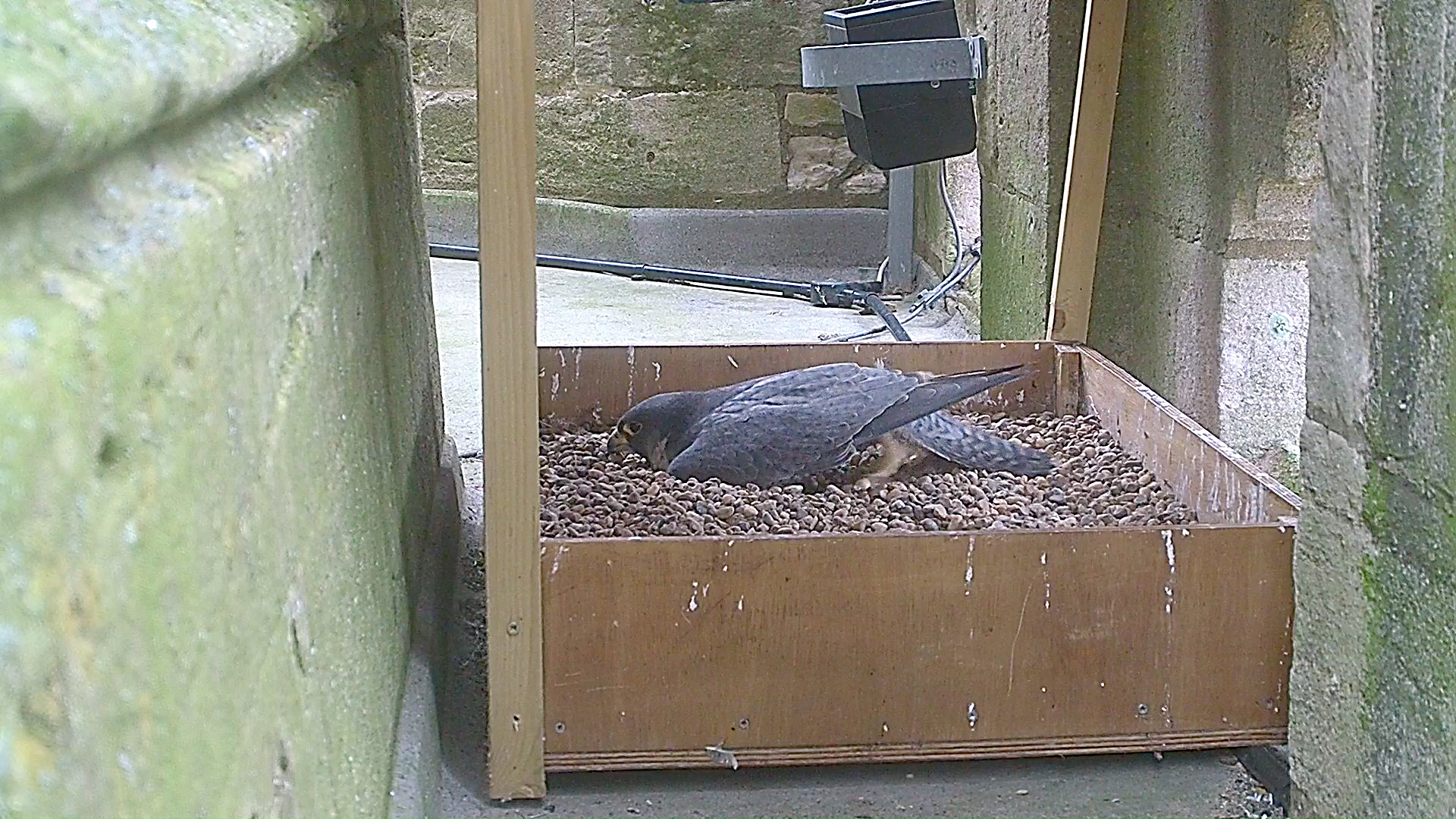
22 February
Courtship – one of several visits from 06.35.
28 February
A visiting peregrine that landed on the spire this afternoon was chased off by our residents.
4 March
After a couple of quiet days, the pair were back on the nest tray this afternoon

7 March
Another (or perhaps the same) visiting peregrine was chased away from the spire by the female this morning.
8 March
Female visited the nest tray mid-morning, then the pair copulated on the spire crockets. Further brief visits this afternoon.
9 March
Four visit by the female today – one with the male.
.
14 March
Another visit. There are now 3-4 visits each day, starting before dawn.

17 March
Another visit by the pair mid-afternoon. After the female departed, the male sat on the same spot for almost 2 hours.
20 March
More courtship display. See the 8-minute video on YouTube HERE. The vagrant peregrine was around the church mid-afternoon, seen off by the residents
24 March
The female slept for a couple of hours on the nest last night, and this morning the pair went through an extended courtship sequence, with over an hour on the nest from around 07.40. She then returned and spent 1 hour 20 mins on the nest from midday.

26 March
The female spent much of the time on the nest. The pair mated on the gargoyle in the afternoon and the male brought prey for the female.

27 March
First egg this afternoon at 16.15. She incubated until 19.03, then left. Expect the second in a couple of days. Keep watching and buy our book, or donate to the Lincs Bird Club who paid for the views you are now seeing!
28 March
The egg was left unattended for 4 hours this afternoon, with both birds returning at 18.40. I'm told this is normal behaviour. An egg remains viable for days provided it doesn't get warm from incubation, as it hasn't started to form. The female won't usually incubate until the penultimate egg has appeared, ensuring the eggs hatch within a day or two of each other. Until then, when she's on the nest, she isn't incubating as her 'brood patch' isn't in contact with the egg. She's just sitting over it for protection.
30 March
Second egg at 01.22
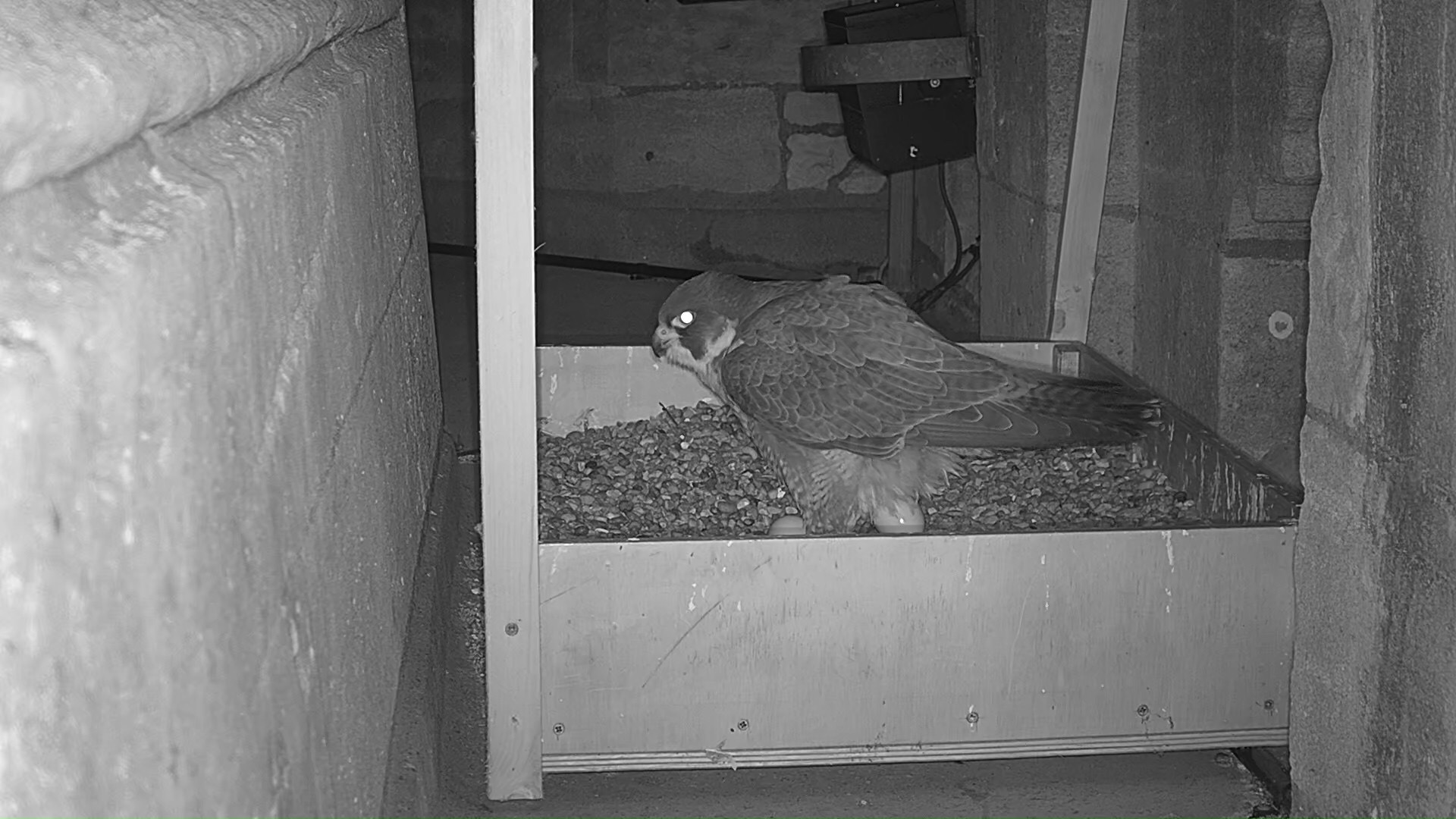
1 April
3rd egg arrived at 10.49

2 April
The male brings in prey
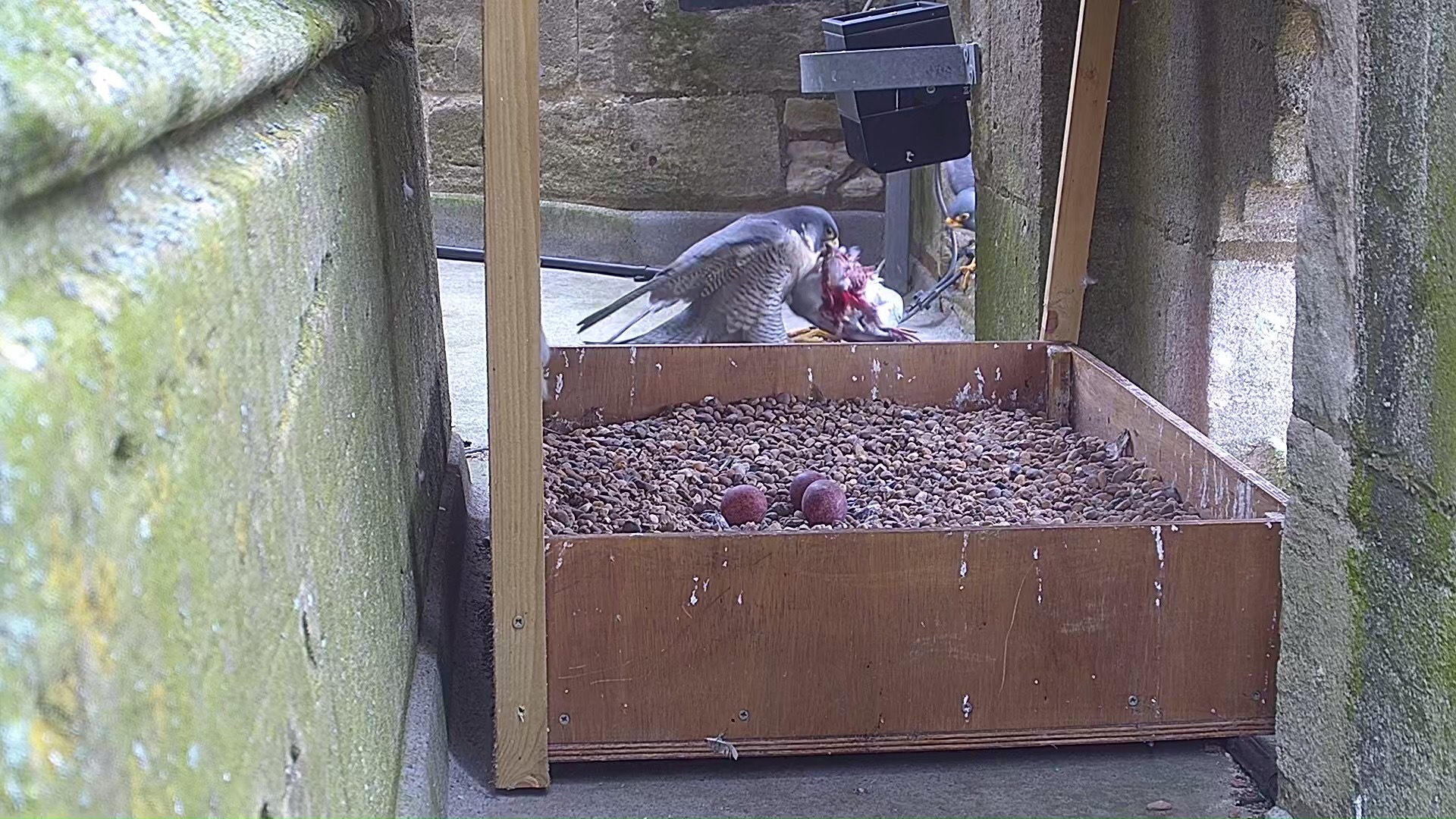
3 April
4th egg at 23.25
4 April
The female left the nest to join the male, chasing off a buzzard soaring over the church.
28 April
Bottoms up! The smart money is first egg to hatch on 6-7 May.

1 May
The male, 3 hours into his stint incubating the eggs, is alerted to the female's alarm call. Together, they chased off a visiting peregrine. Our female returned to the nest 5 minutes later.
00
7 May
Our first chick appeared at 05.25. The second chick hatched at 10.50 and the third at 16.15. The female ate the shell to extract the calcium. She left for a 'comfort break' a few minutes later.
0
First chick
Second chick
9 May
Our 4th chick appeared around 22.00 on the 8th. A compilation video of the chicks being fed is on YouTube. Nature in the raw, I'm afraid. Click the image to view the video.
11 May
The male left the chicks at 11.50, returning with food 30 minutes later. He then spots a distant buzzard and goes off in pursuit. At 12.42, the female brings more food and the youngsters are brooded again at 12.45.
26 May
The chick were ringed this morning. 3 girls (ring codes: PXL, PZL, PAN) and a boy (PBN). All were healthy and well-fed.
1 June
Earlier than predicted, two of the juveniles have 'escaped' from the nest tray. They are staying close by though. The female went after a very high-flying red kite this afternoon
3 June
An increasingly rare sighting now. The four juveniles being fed this morning

19 June
One of the juveniles (PXL) in the air this morning around 08.30 – currently sitting on the nave roof. A second (PBN) fledged later and is on the parapet beneath the bellchamber where it was fed by an adult at 17.40. It means photos like the one below, courtesy of Peter Taylor, won't be seen again this season.
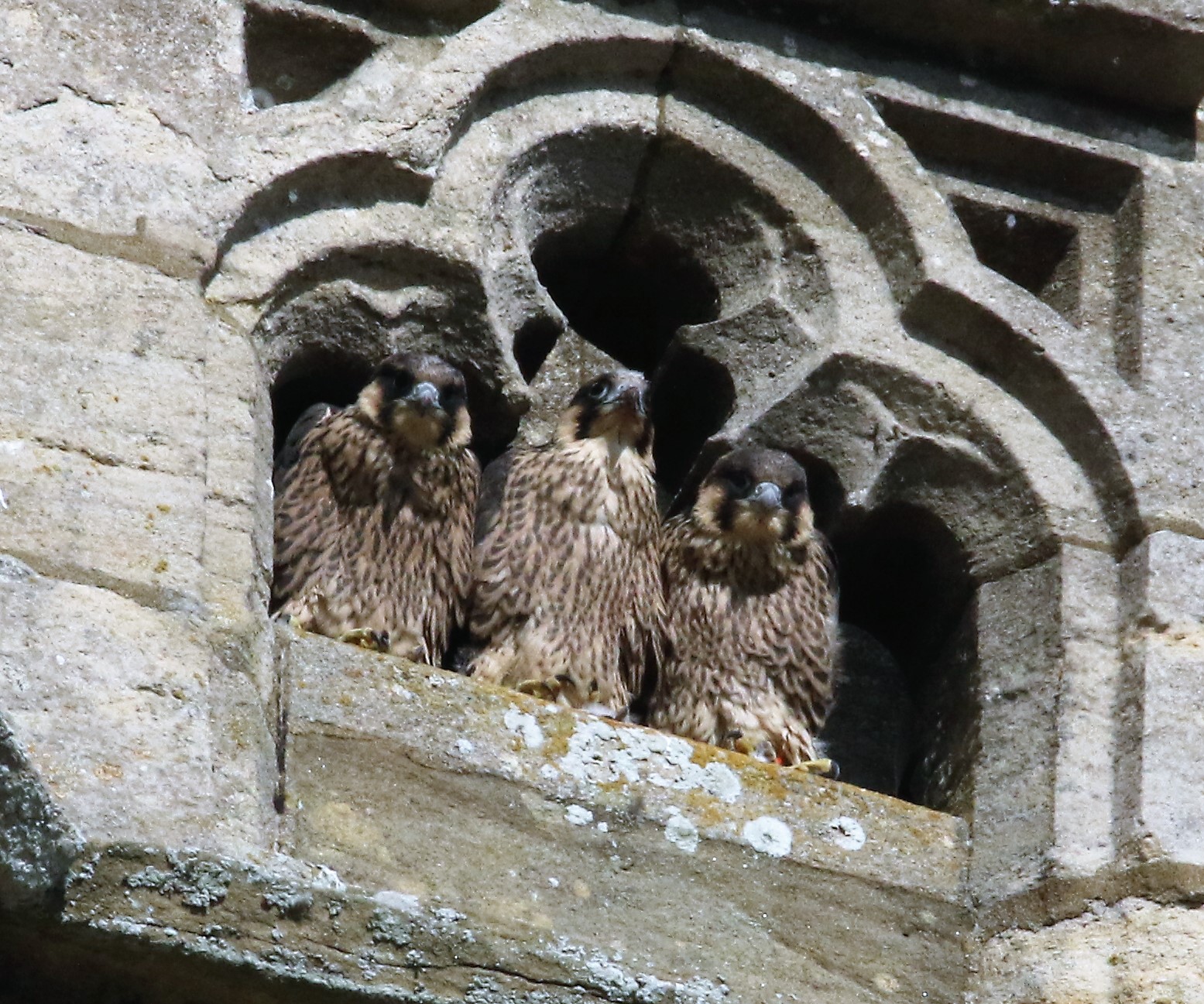
20 June
17.30 today. Three have now fledged, and are perched at various points around the tower. One is left alone, peerring through the castellations. It'll be a lonely night for her!
25 June
The remaining Juvenile (PAN) was seen flying well yesterday, though they do like to return to the tower for a siesta! With all four on the wing, it's been a successful season.
 000
000
27 June
The juveniles are rarely seen on the walkway now, but all four are becoming proficient in flying.
25 July
All four juveniles still active around the church, hunting their own prey, but willing to accept any handouts from the adults.
oooooooo


